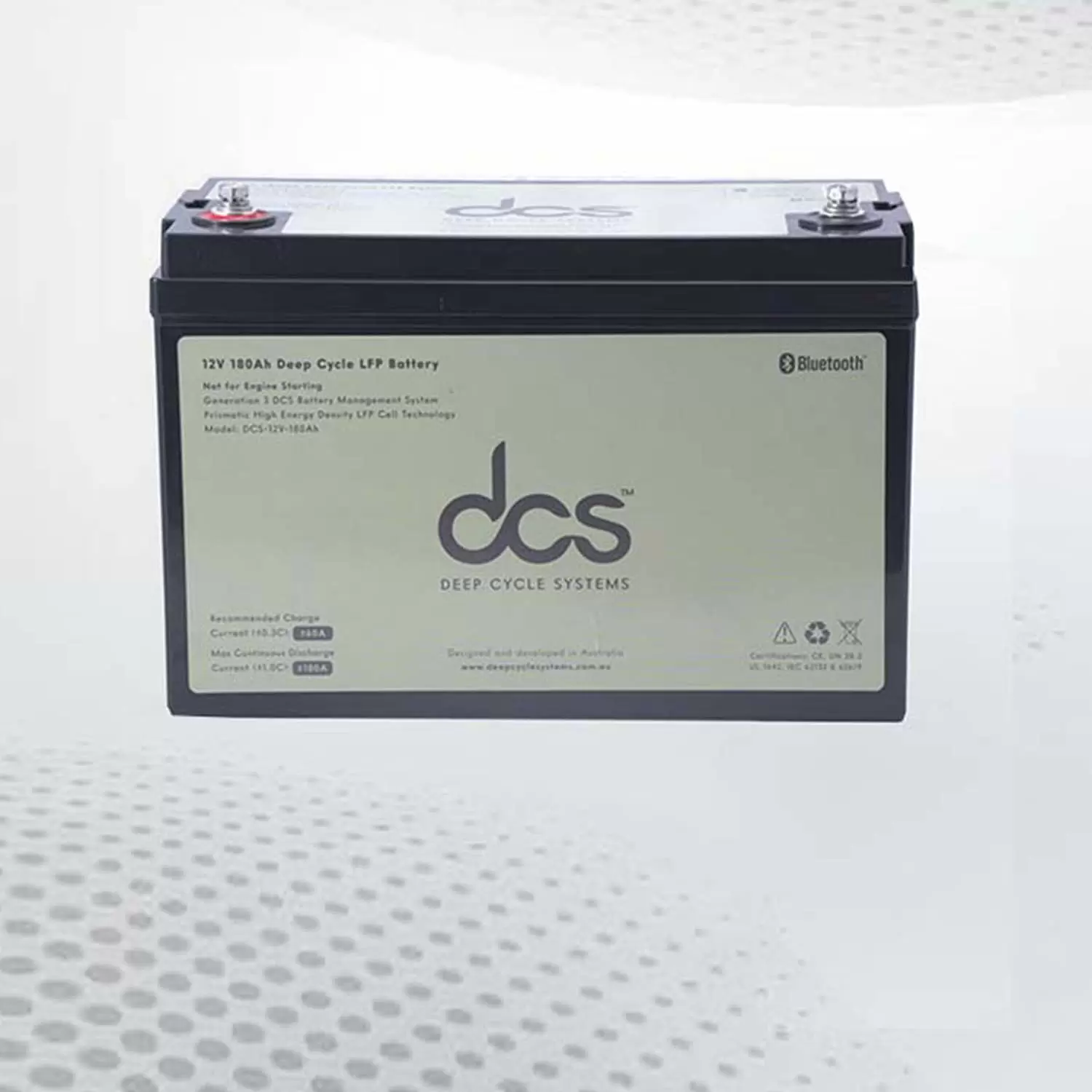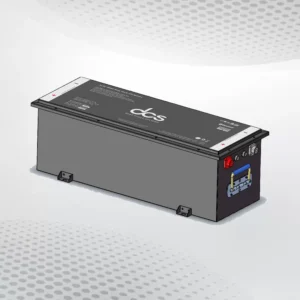In modern technology, lithium-cranking batteries are ushering in a new energy storage and utilisation era. These powerhouses of efficiency and reliability are transforming how we start and operate our vehicles and energising various devices. With their compact size and remarkable performance, 12-volt lithium batteries are revolutionising industries and providing consumers with unprecedented power solutions. This blog post will explore the fascinating world of lithium cranking batteries and uncover why they have become the preferred choice for powering many applications.
Understanding Lithium-Cranking Batteries
Lithium-cranking batteries, called lithium-starter batteries, have significantly progressed from their traditional lead-acid counterparts. Made up of lithium-ion cells, these batteries are notably lighter and more compact, making them suitable for diverse applications. Their core technology enables high energy density and excellent charge cycles, delivering consistent power output and efficient engine starting under challenging conditions.
As technological advancements continue, these batteries lead a power revolution, offering superior performance and durability. The ability to deliver high-cranking amps in a compact form factor makes them an ideal choice for modern, tech-heavy environments where reliability and efficiency are critical.
Benefits of Lithium-Cranking Batteries
Lithium-cranking batteries offer numerous benefits, making them an ideal choice for modern vehicles. One of the most significant advantages is their lightweight design. Compared to traditional lead-acid batteries, lithium options are up to 50% lighter, making them easier to handle and reducing the vehicle’s overall weight. This translates to improved fuel efficiency and enhanced handling, particularly for performance vehicles or motorcycles where every kilogram counts.
Another key benefit is the exceptional power delivery provided by lithium-cranking batteries. They offer a higher cranking power relative to their size, allowing for quick and reliable engine starts even in extreme weather conditions. Their ability to deliver a high burst of power ensures dependable starting performance, whether in cold temperatures or during heavy-duty use.
Thanks to their advanced chemistry, lithium batteries also have a longer lifespan than conventional batteries. They offer a more durable solution with a more significant number of charge and discharge cycles, minimising the need for frequent replacements. Additionally, their low self-discharge rate means they can hold a charge for extended periods without losing power, making them ideal for seasonal vehicles.
The Role of 12-Volt Lithium Batteries
12-volt lithium batteries are vital in various applications, from automotive to renewable energy systems. Their compact design and lightweight construction make them an ideal vehicle choice, particularly in high-performance settings where every ounce counts. Unlike traditional lead-acid batteries, 12-volt lithium batteries offer higher energy density, allowing for more power storage in a smaller size.
In automotive applications, these batteries provide excellent cold cranking amps (CCA), ensuring reliable engine starts even in extreme conditions. Their rapid charging capabilities mean they can be quickly recharged, minimising downtime and enhancing efficiency. In renewable energy systems, 12-volt lithium batteries are crucial for storing energy from solar panels or wind turbines.
They enable users to harness renewable energy effectively, providing a stable power source for off-grid living or backup systems. The longevity of lithium batteries, often lasting up to twice as long as traditional batteries, reduces the frequency of replacements, making them a cost-effective choice in the long run. These batteries incorporate advanced battery management systems (BMS) that protect against overcharging and overheating, enhancing safety and reliability.
Features of Lithium Starter Batteries
Lithium-starter batteries are engineered to provide robust and reliable performance for various automotive and marine applications. One of the standout features of these batteries is their high energy density, which allows them to deliver substantial power while maintaining a compact and lightweight design. This feature makes lithium-starter batteries ideal for vehicles that require high-cranking power without adding unnecessary weight.
Another key feature is the rapid charging capability. Lithium starter batteries can be charged significantly faster than lead-acid batteries, reducing downtime and ensuring they are ready to perform when needed. These batteries also boast low self-discharge rates, meaning they can hold their charge for extended periods, even when not in use. Lithium-starter batteries are equipped with advanced battery management systems (BMS), which protect against overcharging, overheating, and short circuits.
This ensures safe and reliable operation, reduces the risk of damage, and prolongs battery life. The BMS also helps maintain the battery’s efficiency and health by balancing the charge across all cells. Another highlight of lithium-starter batteries is their durability. They are designed to withstand vibrations and harsh environmental conditions, making them suitable for high-performance applications and off-road or marine use, where reliability is crucial.
Choosing the Right Lithium-Cranking Battery
Choosing the correct lithium-cranking battery ensures reliable vehicle performance and long-term durability. With numerous options available, selecting the best one can be challenging. Here are vital tips to help guide the decision-making process:
Consider the Battery’s Cranking Amps
Cold Cranking Amps (CCA) and Marine Cranking Amps (MCA) indicate the battery’s ability to start an engine in cold conditions. Higher CCA or MCA values are ideal for larger engines or those operating in colder climates, as they provide the necessary power to start your vehicle efficiently.
Check the Battery’s Size and Compatibility
Ensure the lithium-cranking battery fits your vehicle’s dimensions and specifications. A properly sized battery simplifies installation, prevents vibration-related issues, and provides a secure fit within the engine compartment.
Look for Safety Features
Lithium batteries should have built-in safety features, such as overcharge and short-circuit protection. These features help safeguard the battery and vehicle components from potential damage, ensuring a safer and more reliable performance.
Battery’s Weight and Energy Density
Lithium batteries are significantly lighter than traditional options, making them ideal for applications where reducing weight is beneficial. Their high energy density also ensures they can deliver consistent power without taking up excessive space.
Consider Lifespan and Warranty
Check for a battery with a long service life and a solid warranty. This ensures maximum value from your investment and reliable performance for years to come, reducing the need for frequent replacements and maintenance.
Installation Tips for Lithium-Cranking Batteries
Proper installation of lithium-cranking batteries is essential to ensure safety and optimal performance. Select a battery that matches the vehicle’s specifications, including the required cold cranking amps (CCA) and voltage. Before installation, confirm that the lithium-cranking battery is fully charged to maximise its initial performance.
When removing the old battery, ensure the vehicle’s engine and all electronics are turned off. Start by disconnecting the negative terminal first, followed by the positive terminal, to prevent electrical shorts. Clean the battery tray and terminals once the old battery is removed to remove any corrosion or debris. This step helps establish a secure and efficient connection. Position the lithium-cranking battery correctly in the tray, ensuring it fits securely without any movement.
Attach the positive terminal first, followed by the negative terminal. Tighten the connections firmly but avoid overtightening, as this may damage the terminals. If present, check for compatibility with the vehicle’s battery management system (BMS). Lithium-cranking batteries often include their own BMS to prevent overcharging or discharging, so ensuring the system integrates smoothly is crucial.
Applications in Modern Vehicles and Devices
Lithium-cranking batteries are increasingly being utilised in many modern vehicles and devices. Their high energy density and reliable performance make them ideal choices for electric cars, where efficiency and longevity are paramount. In the automotive industry, these batteries power everything from cars and motorcycles to electric scooters and recreational vehicles. Beyond the automotive sector, lithium-cranking batteries are used in marine applications, providing reliable power for boats and yachts.
They are also popular in aviation, where lightweight and efficient power sources are essential. Additionally, these batteries find applications in portable electronics, such as laptops and power tools, where long-lasting and efficient power is critical. Their ability to deliver consistent power makes them invaluable across various sectors. They support advanced electronics and infotainment systems in modern vehicles and provide stable energy for renewable energy systems like solar installations.
Maintenance and Care for 12 Volt Lithium Battery
Proper maintenance and care can significantly extend the lifespan and efficiency of 12 volt lithium batteries. Regularly inspect the battery terminals for any signs of corrosion and clean them using a suitable cleaning solution. It’s essential to monitor the battery’s voltage and state of charge, ensuring it stays within the manufacturer’s recommended range to prevent over-discharging or overcharging.
Store the 12 volt lithium battery in a relaxed, dry environment when it is not in use to minimise the risk of degradation. Extreme hot and cold temperatures can negatively impact the battery’s performance and longevity, so it’s crucial to avoid exposing the battery to such conditions. If your lithium battery includes a built-in battery management system (BMS), use it to track the battery’s health and performance, promptly addressing any irregularities.
Additionally, ensure that the battery is securely mounted in its compartment to prevent movement that could lead to physical damage. Following these guidelines will help maintain the battery’s reliability and ensure it continues to provide consistent power for your applications over the long term.
Conclusion
Lithium-cranking batteries are transforming how people power their vehicles, offering a combination of reliability, efficiency, and long-lasting performance. As drivers seek advanced energy solutions, these 12-volt lithium options provide unmatched benefits, making them an ideal choice for modern vehicles. Lithium-cranking batteries are paving the way for enhanced automotive performance with their lightweight design, rapid charging capabilities, and superior energy density. This technology ensures a dependable power source supporting today’s demanding driving conditions.
FAQs
What are lithium-cranking batteries, and how do they differ from traditional lead-acid batteries?
Lithium-cranking batteries are advanced power sources specifically designed to start engines. Unlike traditional lead-acid batteries, lithium-cranking batteries offer a higher energy density, lower weight, and faster charging times. This makes them ideal for automotive and marine applications, where performance and reliability are critical. Additionally, they have a longer lifespan and require minimal maintenance compared to their lead-acid counterparts.
Why are lithium-cranking batteries ideal for high-performance vehicles?
Lithium-cranking batteries provide superior cold cranking amps (CCA), which ensures reliable engine starts even in extreme temperatures. High-performance vehicles often demand higher power outputs, and lithium-cranking batteries deliver consistent power with faster discharge rates. Their lightweight nature also helps reduce overall vehicle weight, enhancing efficiency and acceleration.
How long do lithium-cranking batteries typically last?
Lithium-cranking batteries’ lifespans can range from 5 to 10 years, depending on usage and maintenance. They generally last longer than traditional batteries because they can handle repeated charge and discharge cycles without degrading. Proper care, such as avoiding complete discharges, will extend their longevity.
Can lithium cranking batteries be used in boats and marine applications?
Lithium cranking batteries are ideal for marine applications due to their resistance to vibrations and ability to deliver consistent power in harsh environments. They also have a lower self-discharge rate, making them suitable for boats that are not frequently used.
Are lithium-cranking batteries safe to use?
Lithium-cranking batteries incorporate safety features such as built-in battery management systems (BMS) that protect against overcharging, overheating, and short circuits. These systems ensure safe operation, making lithium-cranking batteries reliable and secure for various applications.
| Related Business Listings |
| Contact Directory |
| Local Business Profiles |




